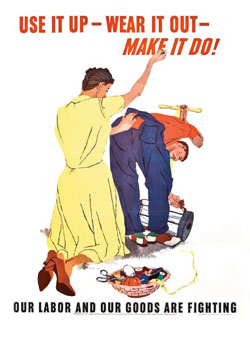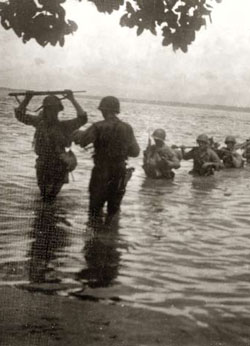Montana: Stories of the Land
Companion Website and Online Teacher's Guide
Chapter 19 - World War II in Montana
Chapter 1 - Montana: Where the Land Writes History
Chapter 2 - People of the Dog Days
Chapter 3 - From Dog Days to Horse Warriors
Chapter 4 - Newcomers Explore the Region
Chapter 5 - Beaver, Bison, and Black Robes
Chapter 6 - Montana's Gold and Silver Boom
Chapter 7 - Two Worlds Collide
Chapter 8 - Livestock and the Open Range
Chapter 9 - Railroads Link Montana to the Nation
Chapter 10 - Politics and the Copper Kings
Chapter 11 - The Early Reservation Years
Chapter 12 - Logging in the "High Lonesome"
Chapter 13 - Homesteading This Dry Land
Chapter 14 - Towns Have Lives, Too
Chapter 15 - Progressive Montana
Chapter 16 - Montana and World War I
Chapter 17 - Montanans on the Move
Chapter 18 - The Great Depression Transforms Montana
Chapter 19 - World War II in Montana
Chapter 20 - Building a New Montana
Chapter 21 - A People's Constitution
Chapter 22 - Living in a New Montana
Learning From Historical Documents
Letter from Howard Toole to Governor Sam Ford, from Missoula, 1942. Montana Governors records, 1889-1962. Manuscript Collection 35. [box 107 folder 4]. Montana Historical Society Research Center. Archives. Excerpted in Not In Precious Metals Alone: A Manuscript History of Montana (Helena, 1976): 203.
Context for Howard Toole's Letter:
Embarrassed by their behavior during World War I, Montana exhibited little animosity toward the resident German population during the Second World War. The Japanese, a more readily identifiable minority, were another matter. Fearful that Japanese Americans might help the Japanese military in case of an invasion of the United States, the federal government evacuated all people of Japanese descent from the West Coast to more isolated areas. Montana, whose colleges, CCC camps, and military posts were slated to receive many evacuees, reacted sharply - particularly to the idea that Japanese Americans might be allowed to attend the university, taking the places of young men fighting overseas.
About Primary Sources:
Letters, diary entries, census records, newspapers, and photographs are all examples of "primary sources," material created at a particular moment in the past that has survived into the present. Primary sources can provide clues to the past. They are our windows into an earlier time. The Montana Historical Society contains thousands of primary sources. In the 1970s, archivists collected just a few snippets into a book, which they called Not in Precious Metals Alone: A Manuscript History of Montana. That book is now on the web in its entirety. The above sample from that book relates directly to this chapter.


